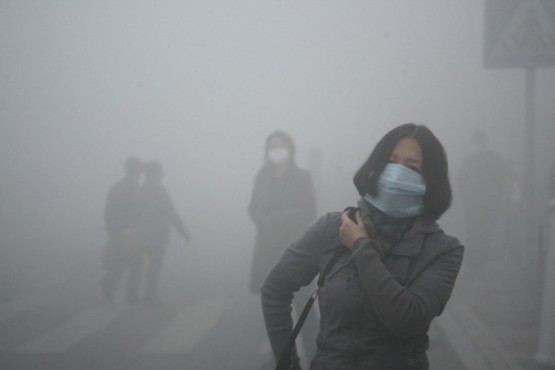Ahead of the United Nations Climate Change Conference set to begin in Paris late this year, China today submitted a carbon-curbing plan to the U.N. formally committing to halt rising greenhouse gas emissions by 2030. The Guardian reports:
The pledge has been eagerly awaited as the country is the world’s largest carbon emitter.
China said it would increase the share of non-fossil fuels as part of its primary energy consumption to about 20% by 2030, and peak emissions by around the same point, though it would “work hard” to do so earlier.
The figures are contained in a document submitted to the United Nations ahead of the next round of UN climate talks in Paris. All countries are expected to submit their national pledges to reduce carbon emissions beyond 2020, also known as Intended Nationally Determined Contributions (INDC).
China plans to increase its installed capacity of wind power to 200GW and solar power to around 100 gigawatts (GW), up from 95.81GW and 28GW today, respectively. It will also increase its use of natural gas which is expected to make up more than 10% of its primary energy consumption by 2020.
According to estimates by E3G, a European-based environmental thinktank, China’s plan will see it install as much low-carbon energy as the entire US electricity system capacity to date. […] [Source]
The official pledge from the world’s biggest greenhouse gas emitter follows an informal bilateral agreement between Beijing and Washington last November, in which the former promised capped emissions and the latter emission reductions by 2030. That agreement met mixed reactions from international commentators, and itself followed Premier Li Keqiang’s March 2014 declaration of a “war against pollution.” Reuters’ Julian Ponthus reports on how the newly submitted plan extends beyond the earlier U.S.-China deal:
In a new element beyond the U.S.-China deal, Beijing said it would cut its CO2 emissions per unit of gross domestic product by 60-65 percent from 2005 levels by 2030. That would deepen a 40-45 percent cut already set by Beijing for 2020.
[…] China accounts for a quarter of world greenhouse gases and its plan, submitted to the United Nations on Tuesday, means governments accounting for more than half the global total have now outlined goals for climate action beyond 2020.
About 40 countries emitting just over 30 percent of world emissions have previously submitted their plans, including the United States and the European Union. National plans will be the building blocks of a Paris accord.
[…] “The United States and China can no longer use inaction by the other as an excuse for ignoring the risks we all face from climate change. Both countries are acting,” said Bob Perciasepe, president of the U.S. Center for Climate and Energy Solutions think-tank. [Source]
Last year coal production in China fell by 2.1% from the year prior—the first decline in China this century—and since then official data has suggested a continued decline and accompanying reduction in carbon emissions. BBC quotes climate experts who warn against counting recent developments such as coal reduction and the U.N. pledge as an early victory in the global fight against climate change:
Commenting on the statement, Li Shuo, climate analyst for Greenpeace China, said for success in Paris, all players – including China and the EU – needed to up their game.
“Today’s pledge must be seen as only the starting point for much more ambitious actions.
“It does not fully reflect the significant energy transition that is already taking place in China.
“Given the dramatic fall in coal consumption, robust renewable energy uptake, and the urgent need to address air pollution, we believe the country can go well beyond what it has proposed today.”
[…] Samantha Smith, global climate leader at WWF, said China was the first major developing country emitter to set a total emissions peak target.
[…] “We emphasise the importance of the fact that China has made commitments beyond its responsibility as a developing country. But we hope that China will continue to find ways to reduce its emissions, which will in turn drive global markets for renewable energy and energy efficiency.” [Source]
At China’s central legislative meetings earlier this year environmental issues were reportedly high on the agenda, even as the “Under the Dome” air pollution documentary, independently produced by a former state media broadcaster, saw strict censors. Last month, the State Council released new regulations for ecologically sound development, including means of punishment for environmentally unfriendly local officials.








